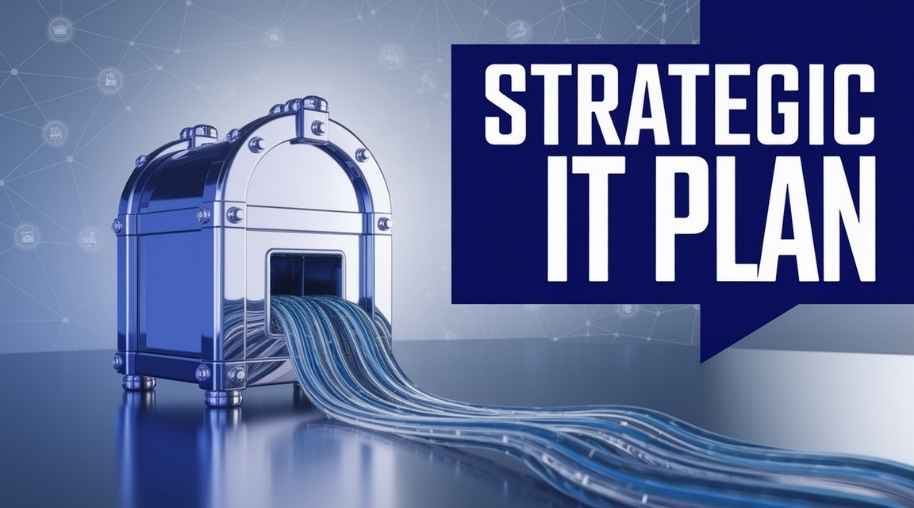SITP Full Form-Strategic Information Technology Plan
by Shashi Gaherwar
0 2078
Strategic Information Technology Plan: Aligning IT with Business Goals for Long-Term Success

Introduction
In today’s digital age, businesses rely on technology to drive efficiency, innovation, and competitive advantage. A Strategic Information Technology Plan (SITP) is a blueprint that aligns an organization’s IT infrastructure and initiatives with its business objectives, ensuring technology investments foster growth, risk management, and operational efficiency.
A well-structured IT strategy minimizes inefficiencies, enhances cybersecurity, improves customer experiences, and drives innovation. This article explores the importance, components, benefits, and implementation of an SITP.
What is a Strategic Information Technology Plan?
A Strategic Information Technology Plan (SITP) is a long-term roadmap guiding an organization’s use of technology to achieve business goals. It directs IT decision-making, budgeting, and resource allocation, ensuring alignment with business needs. The plan covers:
- Current IT Capabilities
- Future Technology Goals
- IT Governance and Policies
- Cybersecurity Strategies
- Infrastructure and Cloud Computing
- Digital Transformation Initiatives
- Risk Management and Compliance
Key Components of a Strategic IT Plan
- Vision and Objectives: Defines how IT supports short- and long-term business goals.
- IT Governance: Establishes rules and compliance for secure IT operations.
- Infrastructure Assessment: Evaluates hardware, software, and networks for gaps.
- Cybersecurity Strategy: Protects data and ensures regulatory compliance.
- Digital Transformation: Integrates cloud, AI, and automation for process enhancement.
- Budget Allocation: Manages financial and human resources for IT initiatives.
- Performance Metrics: Tracks progress with KPIs.
- Disaster Recovery: Ensures business continuity during disruptions.
Benefits of a Strategic Information Technology Plan
- Business Alignment: Ensures IT drives business growth.
- Enhanced Security: Proactively manages cybersecurity and compliance.
- Better Decisions: Provides data-driven insights for IT investments.
- Innovation: Adopts technologies for competitive advantage.
- Cost Optimization: Prioritizes investments for maximum ROI.
- Digital Transformation: Enhances customer experiences and operations.
- Operational Efficiency: Reduces downtime and automates workflows.
How to Develop a Strategic IT Plan
- Assess Infrastructure: Evaluate current IT resources.
- Define Goals: Align IT with objectives like cost reduction or customer service.
- Identify Trends: Research technologies like AI or cloud.
- Create Roadmap: Plan technology implementation and upgrades.
- Establish Governance: Set cybersecurity and compliance policies.
- Allocate Resources: Distribute budget and personnel.
- Monitor Progress: Track KPIs and adjust as needed.
Challenges in Implementing an IT Strategy
- Rapid Tech Changes: Keeping pace with evolving technology.
- Budget Constraints: Limited funds for IT projects.
- Cybersecurity Risks: Rising threats from increased digital adoption.
- Resistance to Change: Stakeholder reluctance to adopt new systems.
- Skill Shortages: Lack of skilled IT professionals.
Future Trends in Strategic IT Planning
- Cloud-First Strategies: Shift to cloud computing for scalability and security.
- AI and Automation: Enhance efficiency and data analysis.
- Cybersecurity Focus: Prioritize investments to protect data.
- Edge and IoT: Enable real-time processing with IoT and edge computing.
- Agile and DevOps: Accelerate software development and deployment.
A Strategic Information Technology Plan (SITP) is essential for leveraging technology for growth and efficiency. By aligning IT with business objectives, organizations drive digital transformation, optimize costs, and enhance cybersecurity. A dynamic IT strategy ensures businesses remain competitive and adaptable to technological and market shifts.
Further Learning Resources
If you’re passionate about building a successful blogging website, check out this helpful guide at Coding Tag – How to Start a Successful Blog. It offers practical steps and expert tips to kickstart your blogging journey!
For dedicated UPSC exam preparation, we highly recommend visiting www.iasmania.com. It offers well-structured resources, current affairs, and subject-wise notes tailored specifically for aspirants. Start your journey today!

Share:








Comments
Waiting for your comments